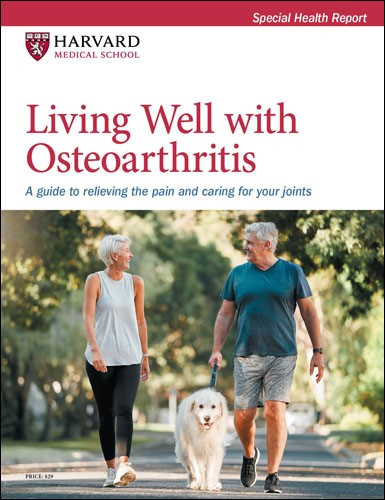Strength training tied to smaller risk of knee osteoarthritis and pain later in life
In the journals
- Reviewed by Howard E. LeWine, MD, Chief Medical Editor, Harvard Health Publishing; Editorial Advisory Board Member, Harvard Health Publishing

People who engaged in strength training were less likely than those who didn't to develop knee pain and knee osteoarthritis as they approached their senior years, according to a study published online Oct. 23, 2023, by Arthritis & Rheumatology.
Researchers recruited 2,607 people (average age 64, 44% men) without arthritis and asked them if they did strength training and when they first began. Then for eight years, participants submitted periodic questionnaires about how often they engaged in strength training. Every four years, they underwent knee pain assessments and knee x-rays to look for osteoarthritis. Over all, rates of knee osteoarthritis and pain were 20% lower among those who did strength training versus those who never tried it.
The researchers also found that engaging in strength training later in life, even if you begin after age 50, can help provide joint damage protection similar to those who began earlier.
While the findings of this observational study don't prove that strength training itself reduces your risk of developing knee osteoarthritis and having less knee pain, the results suggest another potential health benefit beyond the known improvements in muscle mass and strength as people age.
Image: © Kali9/Getty Images
About the Author

Matthew Solan, Executive Editor, Harvard Men's Health Watch
About the Reviewer

Howard E. LeWine, MD, Chief Medical Editor, Harvard Health Publishing; Editorial Advisory Board Member, Harvard Health Publishing
Disclaimer:
As a service to our readers, Harvard Health Publishing provides access to our library of archived content. Please note the date of last review or update on all articles.
No content on this site, regardless of date, should ever be used as a substitute for direct medical advice from your doctor or other qualified clinician.
















